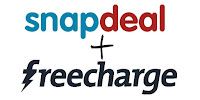Asus has announced to launch its new flagship phone,
Zenfone 2, by the end of April in India.
The phone comes with a new ergonomic design, a 5.5-inch Full HD and a (1280x1920p) IPS display with a wide 178-degree viewing angle. Asus claims its TruVivid technology enhances display performance more with brighter colors. The display has a narrow 3.3mm bezel, giving ZenFone 2 a 72% screen-to-body ratio, and is covered with Corning Gorilla Glass 3.
The ZenFone 2 is powered by an up to 2.3GHz 64-bit Intel Atom quad-core processor Z3580 and has 4GB RAM to deliver up to seven times faster gaming performance than its predecessor.
The phone comes with a new ergonomic design, a 5.5-inch Full HD and a (1280x1920p) IPS display with a wide 178-degree viewing angle. Asus claims its TruVivid technology enhances display performance more with brighter colors. The display has a narrow 3.3mm bezel, giving ZenFone 2 a 72% screen-to-body ratio, and is covered with Corning Gorilla Glass 3.
The ZenFone 2 is powered by an up to 2.3GHz 64-bit Intel Atom quad-core processor Z3580 and has 4GB RAM to deliver up to seven times faster gaming performance than its predecessor.
According to the company, the phone's 60ms touch response
time ensures lag-free input, and OpenGL 3.0 provides enhanced gaming
performance. The ZenFone 2 has built-in 4G/LTE connectivity for faster data
speeds of up to 150Mbit/s in addition to 802.11ac Wi-Fi high-speed Wi-Fi. The
phone supports Dual-SIM with Dual Active mode, allowing users to have two
active phone lines on their device. It will come in 16,32 and 64GB storage
variants.
ASUS ZenFone 2 sports a 13MP PixelMaster camera with an f/2.0 wide-aperture lens, and a 'real tone' flash for warm skin tones and accurate colour.
ZenFone 2 is also equipped with a 5MP front-facing camera with a wide, 85-degree field of view for taking selfies.
The phone runs Android 5.0 Lollipop with a new version of Asus ZenUI - which has a fully-customizable interface - and Trend Micro security software.
ZenFone 2 comes with a high-capacity, 3000mAh battery that provides more than a full day of use on a single charge as per the company. The phone's fast-charge technology enables recharges to 60% battery level in 39 minutes.
Asus ZenFone 2 has an all-new design with a brushed-metal finish and concentric-circle detailing. It introduces a curved case that tapers to 3.9mm at the edges. It also has a rear-mounted volume control key – ideally positioned for the user's index finger as per the company.
The ZenFone 2 comes in Osmium Black, Sheer Gold, Glacier Gray, Glamor Red and Ceramic White colours.
ASUS ZenFone 2 sports a 13MP PixelMaster camera with an f/2.0 wide-aperture lens, and a 'real tone' flash for warm skin tones and accurate colour.
ZenFone 2 is also equipped with a 5MP front-facing camera with a wide, 85-degree field of view for taking selfies.
The phone runs Android 5.0 Lollipop with a new version of Asus ZenUI - which has a fully-customizable interface - and Trend Micro security software.
ZenFone 2 comes with a high-capacity, 3000mAh battery that provides more than a full day of use on a single charge as per the company. The phone's fast-charge technology enables recharges to 60% battery level in 39 minutes.
Asus ZenFone 2 has an all-new design with a brushed-metal finish and concentric-circle detailing. It introduces a curved case that tapers to 3.9mm at the edges. It also has a rear-mounted volume control key – ideally positioned for the user's index finger as per the company.
The ZenFone 2 comes in Osmium Black, Sheer Gold, Glacier Gray, Glamor Red and Ceramic White colours.







